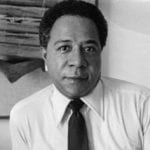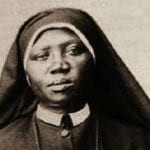 Technology
Technology  Technology
Technology  Movies and TV
Movies and TV 10 Film Shoots That Almost Ended in Disaster
 Politics
Politics The 10 Most Bizarre Presidential Elections in Human History
 Weird Stuff
Weird Stuff 10 Eggs-traordinarily Odd Eggs
 History
History 10 Desperate Last Stands That Ended in Victory
 Animals
Animals Ten Times It Rained Animals (Yes, Animals)
 Mysteries
Mysteries 10 Devastating Missing Child Cases That Remain Unsolved
 Creepy
Creepy 10 Scary Tales from the Middle Ages That’ll Keep You up at Night
 Humans
Humans 10 One-of-a-kind People the World Said Goodbye to in July 2024
 Movies and TV
Movies and TV 10 Holiday Movies Released at Odd Times of the Year
 Technology
Technology Making 10 Common Products from Very Unusual Sources
 Movies and TV
Movies and TV 10 Film Shoots That Almost Ended in Disaster
 Politics
Politics The 10 Most Bizarre Presidential Elections in Human History
Who's Behind Listverse?

Jamie Frater
Head Editor
Jamie founded Listverse due to an insatiable desire to share fascinating, obscure, and bizarre facts. He has been a guest speaker on numerous national radio and television stations and is a five time published author.
More About Us Weird Stuff
Weird Stuff 10 Eggs-traordinarily Odd Eggs
 History
History 10 Desperate Last Stands That Ended in Victory
 Animals
Animals Ten Times It Rained Animals (Yes, Animals)
 Mysteries
Mysteries 10 Devastating Missing Child Cases That Remain Unsolved
 Creepy
Creepy 10 Scary Tales from the Middle Ages That’ll Keep You up at Night
 Humans
Humans 10 One-of-a-kind People the World Said Goodbye to in July 2024
 Movies and TV
Movies and TV 10 Holiday Movies Released at Odd Times of the Year
10 Lifelong Criminals Who Became Successful Authors
“Many fine books have been written in prison,” said Raoul Duke, in Hunter S. Thompson’s Fear and Loathing in Las Vegas. And it’s true. Ghandi, Malcolm X, Nelson Mandela, the Marquis De Sade, and O. Henry all turned their sentences into, well, sentences.
But those guys were writers to begin with. Every person on this list started out as criminal. Not a political martyr, an intellectual, or dissident, but the sort of the person who would hold no qualms about shooting someone in the face. What’s impressive about them is not that they were able to write books; it’s that they were able to affect real change within themselves, shrug off their violent pasts, and free their minds through the power of creativity.
10 Edward Bunker
Edward Bunker can be seen in quite a few films (The Longest Yard, Tango & Cash, and Animal Factory, to name a few) but you might recognize him best as Mr. Blue from Reservoir Dogs. Blue is the dog with the least screen time and lines—he even dies offscreen. However, when you know a little bit about Bunker’s past, it quickly becomes apparent that if the movie were real, he’d be the only member of the gang needed to complete the robbery.
Bunker’s reign of criminal terror started at an early age. He destroyed his neighbor’s generator with a hammer when he was three and then burned the same neighbor’s garage down when he was four. At 15, he jammed a fork into some poor sod’s eyeball—hopefully not the same neighbor. The quite frankly terrifying trajectory of his crimes continued to escalate, and by 17, he was locked up in Los Angeles County Jail, where he soon stabbed a guard and escaped. He was then transferred to San Quentin prison and became the youngest inmate they’d ever had.[1]
He became interested in writing after he was placed in solitary confinement near the cell of a notorious killer and rapist named Caryl Chessman, who was already a published writer. Bunker was fascinated by the idea of telling stories and decided to try writing himself. After 18 years of increasingly ridiculous crimes both in and out of jail (including being arrested under suspicion of being a serial killer, escaping, being pursued by the FBI for a few years, being caught, and then faking insanity), Bunker ended up in Folsom prison at the tail end of the 1960s. He was still working on his writing. After 12 rejections, he finally managed to publish his novel No Beast So Fierce while still in jail. His novel was bought and adapted into the 1978 movie Straight Time, with Dustin Hoffman playing Max Dembo, a loose version of Bunker. And, of course, the real Bunker was also given a small role in the film.
He went on to write several best sellers, wrote and produced a few movies, and even had a number of film roles. Quentin Tarantino apparently saw Straight Time back when he still worked in a video store, and it ended up becoming one of the biggest influences on his first film, Reservoir Dogs. He also made Bunker an unofficial consultant. Unfortunately, there’s just not enough time for us to continue talking about Bunker’s Batman villain–esque list of crimes. However, if you’ve got the time, please watch the above clip, a featurette from Reservoir Dogs where Bunker talks about some of the crazier stuff he did while sounding like the world’s scariest grandad on an awkward road trip.
9 Mark ‘Chopper’ Read
Born in Melbourne, Australia, Mark “Chopper” Read spent the earliest part of his life in a children’s home. At just 14 years old, he was made a ward of the state and admitted to a psychiatric hospital, where he was given electroshock therapy. Unsurprisingly, the brutal treatment didn’t work, and by his late teens, he was the leader of his own criminal gang.
One day, Read had an epiphany: He should only steal from drug dealers—that way, he’d always have a steady supply of cash-rich marks who’d never be able to call the police. Much like Omar from HBO’s The Wire, Read became the scourge of the underworld. Although, even by his own accounts, his crimes were always appallingly brutal (he later claimed to have cut off the toes of rivals with a pair of bolt cutters), he would often claim that he’d never hurt an innocent person.
However, the judge he kidnapped at gunpoint in 1990 might disagree with that. Read had taken him hostage because he believed that was the best way to get one of his gang released from prison. He ended up going to prison himself instead.
While inside, Read became entangled in a prison war. In an effort to get himself transferred to another ward, he convinced one of the other inmates to chop his ears off. He did indeed get transferred, but he still ended up getting stabbed multiple times and losing several feet of bowel and intestines. He would later claim that the “Chopper” nickname came from this incident.[2]
While recuperating, a journalist wrote about one of his crimes, getting some facts wrong. Read got in touch with the journalist and started telling him about some of the other crimes he’d committed. These pages became the basis for Chopper’s first book, which ended up becoming incredibly popular, making him the best-selling author in Australia for a while. He even had international success, with even legendary crime writer Elmore Leonard praising his work. From there, he became a stand-up comedian and the subject of a movie starring Eric Bana. He also made a PSA threatening to kill men who abuse women and even became a rapper for a while. Seriously.
Whether Chopper’s books were 100-percent real or just apocryphal and hyperbole-ridden crime fiction is up for debate. Chopper was a shameless self-promoter with a flair for the dramatic, often admitting that things he’d claimed in the past were “just a joke.” However, the line between fact and fiction often became blurred when Chopper was involved. Check out the interview above where Chopper pulls a loaded gun on a reporter and forces her into a game of Russian roulette.
8 Jimmy Boyle
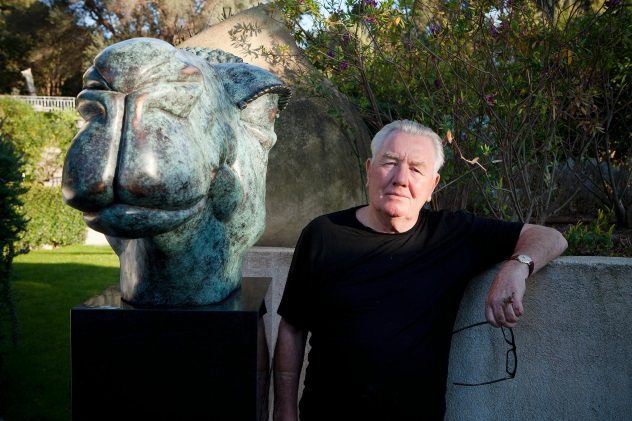
In 1967, a Glasgow gangster named Jimmy Boyle was hiding out in London under the protection of perhaps the most infamous of all British gangsters: the Kray twins. Then he was surrounded by undercover police officers and arrested for the murder of a fellow gangster named Babs Rooney. Boyle had been arrested twice on suspicion of murder in the past but would always maintain that he was innocent of Babs Rooney’s murder. He claimed that the real killer was a close friend, meaning that he was duty-bound not to “grass” (snitch). He was found guilty and sentenced to life in prison.
After several run-ins with prison authorities, Boyle was sent to a special prison unit at Barlinnie Prison in Scotland in 1973. The unit had been set up by a senior prison officer and a civil servant, its aim being to revolutionize the way violent offenders were incarcerated. Prisoners were given democratic power and a say in how the unit was run. They were also encouraged to have an artistic outlet and given access to teachers, books, and art supplies.
In 1977, Boyle wrote his first book, a semiautobiographical novel called Sense Of Freedom. The book deals with Boyle’s harsh upbringing on the streets of Glasgow, his first crimes, and his later redemption upon discovering art and literature in jail. Although the book in no way glorifies Boyle’s life, the novel was so controversial that The Sun would later call him “Scotland’s Most Notorious Murderer.”
Three years after the novel’s release, Boyle ended up marrying a psychiatrist who’d arranged to meet him after reading it. He received parole in 1982 and hasn’t been back in prison since.[3] These days, Boyle is a successful novelist and sculptor whose work, as of 1999 at least, sells for around £10,000 a piece.
7 Chester Himes
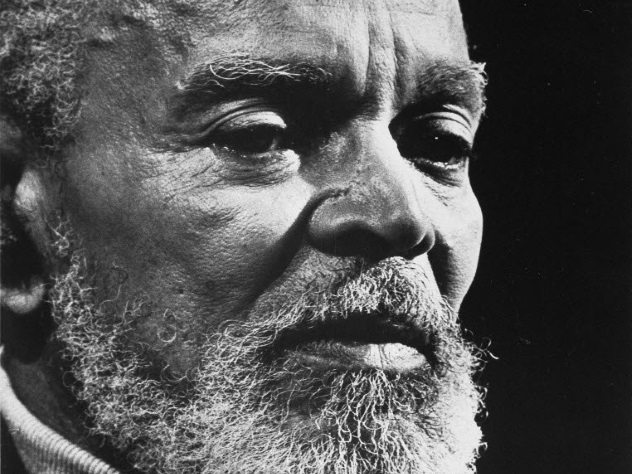
Chester Himes was born into a well-educated middle-class African American family in 1909. However, after his little brother was blinded in an accident, the family began to fall apart, and Himes started to drift toward a life of alcohol, prostitutes, and crime. He soon ended up dropping out of college after an incident in which he took his fraternity to a brothel and ended up in jail in 1928. His list of crimes included check fraud, armed robbery, and attempting to steal guns from the National Guard. He was 19 years old.
In prison, he began to write short stories. Some of these were accepted in various black interest magazines, giving him the confidence to submit to national publications—a task that would have been practically insurmountable for an African American man in the 1930s. However, In 1934, he was published in Esquire, a huge achievement for the time before the Civil Rights Movement. His byline simply read “Prisoner Number 59623.”
Even though Himes had been sentenced to 20 to 25 years, he was released in 1936 (most likely for good behavior) and went on to publish a series of novels. Although the first of his works were mostly protest novels about race relations in the US, Himes later moved to Paris and spent the rest of his life writing surreal noir detective fiction.[4] He would later become the first black writer (from the US, at least) to receive the Grand Prix de Litterature Policiere, the most prestigious award in France for writers of crime and detective fiction.
6 Robert ‘Iceberg Slim’ Beck
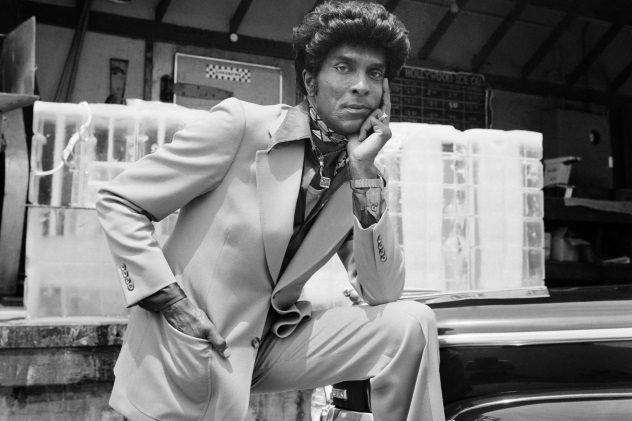
“Iceberg Slim” was born Robert Lee Maupin in Chicago in 1918. His single mother worked hard to provide a fairly stable middle-class upbringing, but even from a young age, Robert was drawn to crime. In order to keep him out of trouble, his mother enrolled him at the Tuskegee Institute (now Tuskegee University) in the 1930s, at roughly the same time as noted author Ralph Ellison, who would later go on to write The Invisible Man. However, Robert was soon expelled for gambling and turned to crime, becoming a pimp at just 18 years of age.
Robert would later claim that he got the “Iceberg Slim” handle after he stood nonchalantly drinking whisky on the rocks during a shoot-out in a bar. In actuality, he gave himself the nickname to add to his legend.
After many stays in various prisons, he began to read and write. Eventually, after serving most of 1960 in solitary confinement at the Cook County House of Corrections, Slim realized that he had gotten a bit old for the pimp game. Upon release, he moved to California, changed his name to Robert Beck, and began to write about his experiences. This culminated in the 1967 autobiographical novel Pimp: The Story of My Life.
Several novels followed, as well as spoken-word albums and essays. By 1971, he had sold over two million books and had had one adapted into a movie, Trick Baby, in 1972. Despite this, he received few royalties from his publisher.
However, Beck’s influence on music, movies, and literature has been far-reaching. Both Ice-T and Ice Cube based their names on his. And one of Beck’s biggest fans is Irvine Welsh, who once said: “If I hadn’t picked up Pimp, I doubt that I could have gone on to write Trainspotting or Glue.”[5]
5 Robert E. Burns
In 1919, Robert Elliot Burns returned from World War I a broken man. While he’d been fighting in Europe, his fiancee had married someone else, his job had been refilled, and the only other position he could find paid just a fraction of his old salary. Worst of all, the trauma of the war had left him with severe shell shock. There was little in the way of help from the government or the military, so Burns soon ended up a destitute, wandering hobo.
Three years later, Burns and two fellow vagrants were arrested for robbing a grocery store in Georgia. Burns was sentenced to six to ten years of hard labor in a chain gang.
The robbery had only netted him $5.80.
Life on the chain gang was brutal and inhumane, and people often tried to break free, even though the chances of being mowed down by bullets or torn apart by bloodhounds was extremely high. One day, Burns saw a chance to escape. He asked one of his fellow inmates to smash his ankle chains with a sledgehammer, bending the chains just enough so that he could wriggle free. Despite the great odds against him, Burns then managed to evade both the bloodhounds and the shotgun-toting search parties.
He was free. And for a while, things went pretty well for him. He settled in Chicago, married, and even managed to create a successful publication: Greater Chicago magazine. However, things went wrong in 1929, when Burns fell out of love with his wife and asked for a divorce. He’d previously told her about his fugitive status, and in a bitter attempt to claim revenge, she reported him to the authorities.
Due to Burns’s high standing in the city of Chicago, a committee of civic leaders formed to help him fight extradition. At first, it seemed like this would work. Georgian politicians promised Burns that if he returned, he wouldn’t have to serve time in another chain gang. According to them, he’d be allowed to simply carry out 60 days of supervised office work. However, the moment he arrived back in Georgia, he was slapped in irons and returned to another chain gang.
Luckily, Burns was able to escape a second time—this time by convincing a farmer to allow him to hide in the back of his truck—and was soon on the lam once more, managing to evade capture again and crossing the border into Tennessee.
In 1931, Burns submitted a series of sensational stories detailing his experiences to True Detective magazine with the title “I Am a Fugitive From a Chain Gang.” To the chagrin of Georgian authorities, who were still searching high and low for their escapee, these proved to be highly popular, so much so that Hollywood soon came knocking. Burns’s story was adapted into a movie, with Burns secretly working on the set as a consultant and acting coach. He spent another 13 years in hiding until his sentence was finally commuted in 1945. The film ending up being so popular that it inspired a huge backlash against the chain gang system, eventually leading to its abolition by 1955.[6]
4 Noel ‘Razor’ Smith
Noel “Razor” Smith’s life of crime began innocently enough. As a child, he was arrested for stealing some apples. According to him, this incident, and provocation from the local police, caused him to escalate his crimes. At 16 years of age, he was sentenced to three years in jail for armed robbery.
Noel’s time in jail did anything but rehabilitate him, as he was surrounded by adult criminals and began to establishing contacts among the London underworld. After his release, he went on to carry out more than 200 bank robberies.
During one of his many stretches inside, he spent nine months in solitary confinement. He taught himself how to read and write in order to deal with the boredom and discovered that he had a talent for storytelling. He submitted one of his stories for a short competition, and to everyone’s surprise, it came in first place. This gave him the confidence he needed to embark on something grander. He purchased a typewriter with his winnings and started working on his autobiography.
In 1997, he was released again and randomly met the famous author Will Self. The two became friendly, and when Smith was jailed again, he began sending some of his work to Self for feedback. Self’s advice was simple: He told Smith that his work was good but that he wouldn’t get anywhere with it unless he stopped getting arrested.
Finally, after the tragic death of his son, Smith took Self’s advice to heart. According to him, he’d realized that “there ain’t no glamour in crime.” Despite the fact that the prison service had once classed him as “below average intelligence,” Smith managed to complete his first novel, A Few Kind Words and a Loaded Gun. It was published in 2004, receiving mostly positive reviews. The book ended with a real event that had seen Smith sent back to prison: While working as a road sweeper, he’d attacked a member of the public who’d emptied his ashtray on a spot Smith had just cleaned. “I dropped my broom and hit him hard with three punches . . . He was still squealing, so I kicked him in the bollocks.”
Smith was serving a life sentence for bank robbery and possession of illegal firearms when his novel was released, and he hadn’t exactly been a model prisoner. He had at least 58 convictions on his record. These included aggravated violence toward prison officers, inciting riots, making improvised weapons, and attempting to escape. Nevertheless, he resolved to try his best to receive parole, kept his head down, and kept working on his writing.
Finally, in 2010, he was released for the last time. After spending 33 years of his life in jail or on the run, he got a job as an assistant editor for Inside Time. He hasn’t reoffended since.[7]
3 Howard ‘Mr. Nice’ Marks
Howard Marks was born in Bridgend, South Wales, in 1945. He started smoking cannabis while studying for a degree at Oxford University in the late 1960s, and when he graduated with the qualifications of a nuclear physicist, he took a completely different path in life, becoming a cannabis smuggler. He quickly became one of the top smugglers in the world, working with the American Mafia, the IRA, and MI6.
Marks thought his new vocation would be temporary (believing that the government would soon legalize marijuana and start collecting taxes) and used his education to come up with a steady line of tricks in order to move vast amounts of cannabis across national borders. For example, two of his best schemes involved hiding 30 tons of marijuana underwater in the ballast of deep-sea salvage ships and creating a fake band so that he could fly cannabis in musical equipment. Soon, his operation ended up becoming so grand that he required an incredible 89 phone lines to run it.
It wasn’t long until the CIA took an interest in him.
As the authorities closed in on him, Marks proved elusive. After a drug charge in Nevada in 1976, he fled and wasn’t seen again until he made a random appearance onstage in London in 1979 . . . surrounded by Elvis impersonators. He was arrested again in the Scottish Highlands in 1980. Although he was found to be in possession of $30 million worth of marijuana, he escaped conviction due to his canny arguing in court that he had been working for MI6 all along. Although he had worked for MI6 in the past, this wasn’t true. However, the confusion and embarrassment it caused the British government meant that Marks was acquitted.[8]
Eventually, the DEA tracked Marks down to his hideout in Spain. Marks was arrested, extradited, and sentenced to up to 25 years in prison in Terre Haute, Indiana. He was paroled seven years later and wrote his autobiography Mr. Nice, named after one of his many pseudonyms.
The book catapulted Marks to infamy, and he went on to become a columnist for Loaded magazine in 1996. He appeared in the Super Furry Animals track “Hangin’ with Howard Marks,” cameoed in the 1999 movie Human Traffic, and even campaigned for election in 1997 under a ticket of marijuana legalization.
His book went on to sell millions of copies and was eventually adapted into a movie in 2010. Marks spent decades campaigning for the legalization of marijuana, and although he lived long enough to see marijuana decriminalized in several US states, no such change in the law took place in his native Britain. He once remarked: “After my experiences at the hands of the US legal system, America is the last place in the world that I thought would be leading the change.”
Marks announced that he had been diagnosed with inoperable bowel cancer in early 2015. Sadly, he passed away in 2016.
2 Chicago May—The Queen Of Crooks
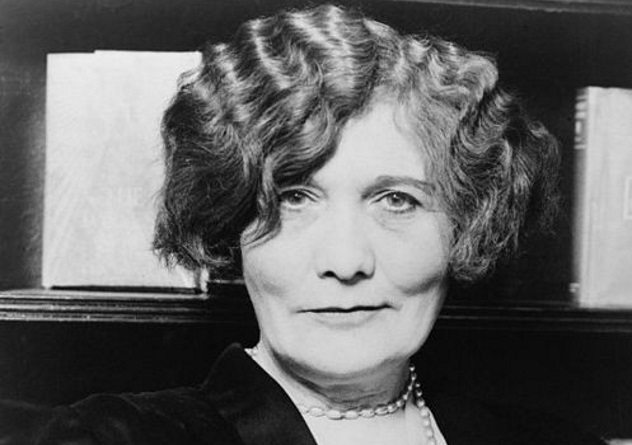
May Duignan was born in 1871 to a poor rural family in County Longford, Ireland. At 19, she began her life of crime by stealing her family’s savings and buying herself a ticket to the United States. From then on, she fell into a globe-trotting life of crime that, according to Frank Colomb’s book Chicago May—Queen of the Blackmailers, involved “swindles, betrayal, conspiracy and revenge” as well as “assault, barbarity, brawling, cruelty, robbery, pickpocketing, drifting, beggary, dereliction and attempted murder.” She was also one of the first people to use the photograph as a method to blackmail people. Her growing notoriety gained her the nickname “The Queen of Crooks.”
Among May’s countless crimes and convictions and dismissals, she also took part in a heist that netted over $250,000 from the American Express company in Paris. Mary and her boyfriend of the time were later arrested. He was sentenced to life on Devil’s Island. She was sentenced to to five years in Montpellier. But after seducing and blackmailing the prison doctor, May was released early. However, in 1907, after the same boyfriend escaped and tracked her to London, convinced that she had ratted him out, she was arrested again—this time for her involvement in the ensuing shoot-out between her, her ex-boyfriend, and her new boyfriend.[9]
These are just a few of May’s exploits, which were famous enough at the time for London newspapers to run headlines proclaiming her the most dangerous person in London, Europe, and the world. Years later, and May, now 56, ill, and chained to a prison bed, was found by a prison reformer named August Ames, who convinced her to document her exploits in a book. May took his advice. She wasn’t a writer by trade, but she kept working at it. The book came out in 1928, but May died virtually destitute the following year.
1 Henri Charriere
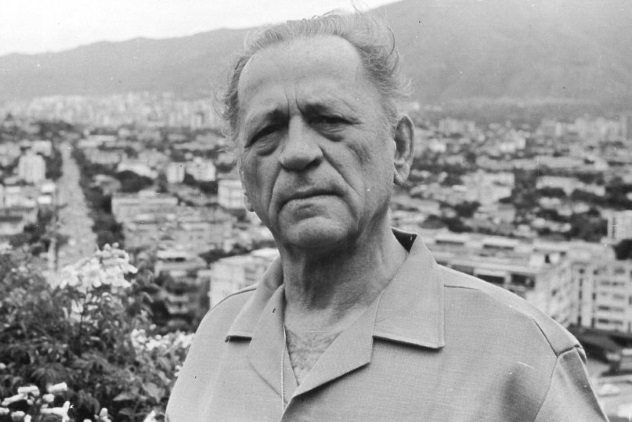
In 1931, a professional safecracker was arrested and convicted of murdering a Monte Marte gangster. Although Henri Charriere admitted to being a criminal, he claimed that in this instance, he was an innocent victim of “dishonest informers.” Nevertheless, he was convicted and sent to a penal colony in French Guiana called Cayenne.[10] Life in the penal colony was hellish, and three years later, Charriere escaped, hiding out briefly in a leper colony before sailing on a rickety boat to the Gulf of Venezuela, where he lived among some island natives until he was recaptured and sent to another colony—this time the notorious Devil’s Island.
Fearing another escape attempt, the authorities kept Charriere in solitary confinement for three years. However, this just made him more eager to escape, and over the years, he carried out another eight escape attempts. The eighth was successful. Charriere constructed a raft of coconut husks to carry him across the shark-infested waters that surrounded the island. He spent years hiding out in Venezuela.
Eventually, Charriere read an autobiography detailing the criminal exploits of Albertine Sar Razin and decided to attempt his own book. Charriere’s novel, Papillon, was hugely successful and became the basis for the film of the same name, starring Steve McQueen and Dustin Hoffman. There has been some criticism that Charriere may have embellished his story or conflated parts with those of other prisoners he met while incarcerated. In 2005, a 105-year-old nursing home resident named Charles Brunier claimed to be the real Papillon, stating that he had been in detention with Charriere.
However, whether his story was an autobiography, a semiautobiographical novel, or a work of complete fiction, it is a fascinating book that changed Charriere’s life forever and is well worth a read.
Aaron is a writer from Editor who has written articles for Listverse, Cracked, Knowledgenuts, and Toptenz.
Read more surprising facts about well-known authors on 10 Shocking Sides Of Famous Authors and 10 Famous Writers With Unsavory Second Careers.




